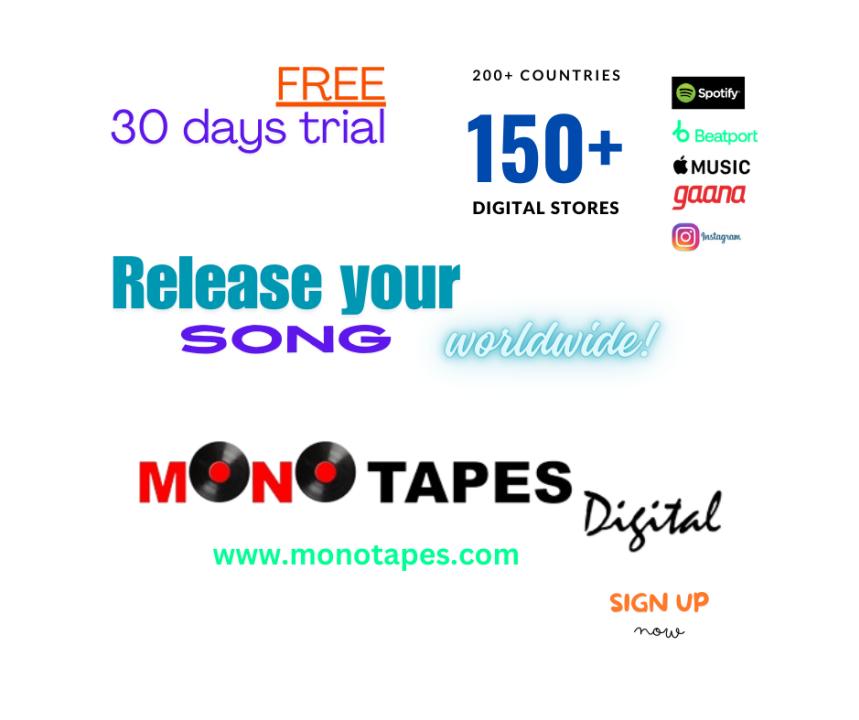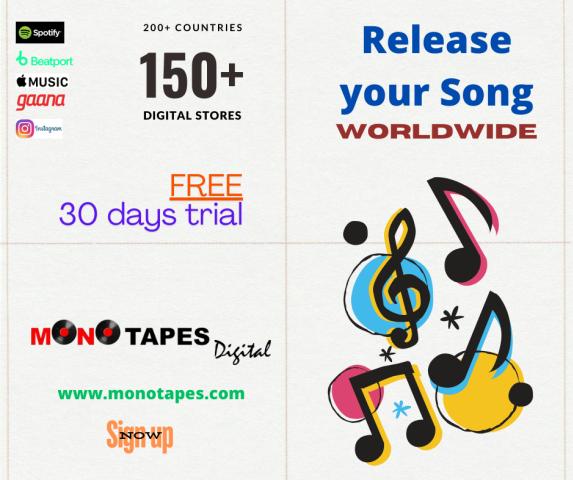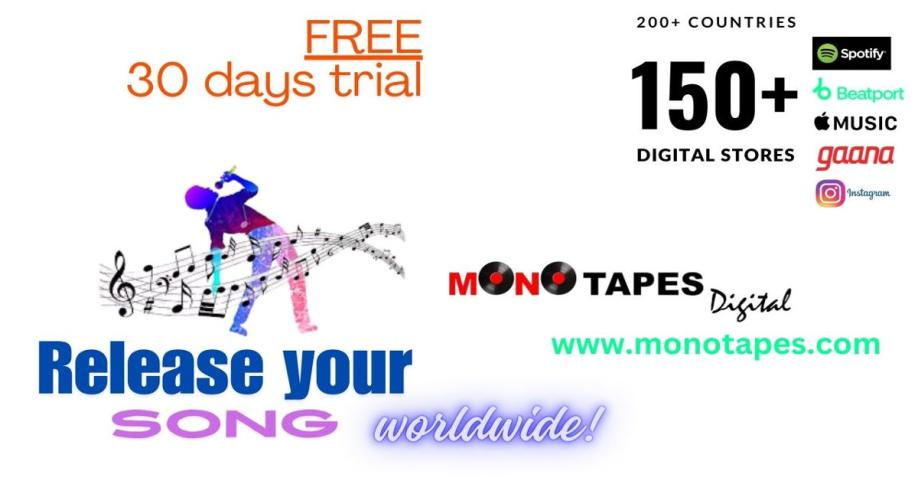In the 21st century, digital
platforms have completely transformed the way music is produced, shared,
and consumed. What was once confined to geographic boundaries has now exploded
into a vast global marketplace, thanks to the rise of streaming services,
social media, and other digital
platforms. These platforms have provided artists with the tools to
reach audiences worldwide, fostered cross-cultural exchange, and
contributed to the rapid evolution of music across borders.
1.
The Role of Streaming Services in Global Music Distribution
The arrival of streaming services
such as Spotify,
Apple Music, and YouTube Music has democratized the music industry. Artists,
whether emerging or established, can now reach listeners across the globe
without the need for a traditional record label. Streaming platforms
remove physical and financial barriers, allowing fans in different countries to
access diverse genres of music, often in real-time.
Data-driven algorithms further personalize the experience, introducing users to
global artists they may not have discovered otherwise. For instance, Spotify’s
“Discover Weekly” playlist is a prime example of how these platforms are
fostering global music discovery by using user data to suggest new songs
from various cultures and regions.
2.
Social Media as a Catalyst for Cultural Exchange
Social media platforms like
Instagram, TikTok, and Twitter have taken the power of music distribution to
another level by encouraging viral sharing and immediate feedback.
Musicians no longer rely solely on the radio or television to debut their
music. A post on TikTok can catapult an unknown song to the top of the
charts overnight.
These platforms also facilitate a cross-cultural
exchange that was previously impossible on such a scale. Artists from
different parts of the world are discovering each other’s music and
collaborating across borders, producing unique sounds that blend various
cultural influences. A Latin pop artist can collaborate with a K-pop singer,
while a Nigerian Afrobeats star might create a fusion track with a Brazilian
samba artist, exemplifying how digital platforms have erased borders
within the music industry.
3.
Empowering Independent Artists
The shift from traditional to
digital platforms has given unprecedented power to independent artists.
With direct access to global distribution channels, they can bypass
traditional gatekeepers like record labels and radio stations, gaining creative
freedom and retaining a larger share of their profits.
Crowdfunding platforms like Patreon, Bandcamp, and Kickstarter allow artists to
generate revenue while maintaining full control over their creative output.
These platforms also connect musicians directly with their fans, enabling
deeper engagement and loyalty. Independent artists from every corner of the
world are finding success in niche markets that would have been inaccessible to
them in a pre-digital era.
4.
The Rise of Global Music Festivals and Virtual Concerts
The rise of digital platforms
has not only expanded the reach of recorded music but also transformed the live
music experience. Global music festivals are now being streamed online,
making them accessible to millions who cannot attend in person. Platforms like
YouTube and Twitch enable artists to broadcast their performances to a global
audience in real-time, further expanding their reach.
The pandemic-induced rise of virtual
concerts has been a significant trend, allowing fans to attend live
performances from the comfort of their homes. These virtual events have brought
diverse audiences together, often featuring artists from multiple countries in
the same lineup. The blending of global music > during these
concerts showcases how the digital age fosters cross-cultural musical
collaboration.
5.
Cross-Cultural Influences in Modern Music
One of the most exciting
consequences of the global reach of music through digital platforms is
the blending of different cultural influences. As artists and listeners alike
are exposed to new genres and sounds, we are witnessing the rise of hybrid
musical > that defy traditional categorization.
Take, for example, the global
popularity of Afrobeats, a genre that originated in Nigeria and has now
been embraced by artists and audiences around the world. Similarly, K-pop
has transcended its South Korean roots to become a global phenomenon, with fans
from the United States to Brazil. These genres, in turn, influence other music
>cultural exchange.
Collaborations between artists from
different countries have become more common, and the results are often
celebrated for their innovation. From Latin reggaeton collaborating with
American rap artists to Middle Eastern sounds influencing European electronic
music, digital platforms have accelerated the cross-pollination of musical
cultures.
6.
The Impact of Data and Analytics on Music Trends
One of the key ways digital
platforms have enabled the global reach of music is through data and
analytics. Streaming services provide artists and record labels with
detailed insights into where their music is being played and by whom. This data
helps artists tailor their marketing strategies to specific regions,
potentially planning tours and promotional efforts where their music has gained
the most traction.
For example, an artist may discover
that their music is surprisingly popular in Southeast Asia, which could lead to
collaboration with local artists or performances in the region. The ability to
track global trends in real-time allows artists to be more strategic in
how they expand their reach and maximize their potential audience.
7.
Bridging Language Barriers with Music
In a world where language can often
be a barrier to communication, music remains a universal language. Digital
music Distribution platforms have made it easier for artists to cross
linguistic boundaries and appeal to listeners who may not speak the same
language. Songs like “Despacito” by Luis Fonsi, which became a global
hit despite being sung in Spanish, demonstrate the power of music to transcend
language barriers.
Moreover, digital platforms offer
the opportunity to subtitle or provide translations for lyrics, further broadening
the accessibility of songs from different cultures. This breakdown of language
barriers fosters greater understanding and appreciation of cultural
diversity, enhancing the global exchange of musical ideas.
8.
Challenges and Opportunities in the Global Music Industry
While the rise of digital platforms
has brought many opportunities, it has also presented challenges, particularly
around monetization. Streaming services often pay artists fractions of a
cent per stream, making it difficult for some to sustain themselves solely on
music revenue.
However, the global exposure that
these platforms offer can lead to additional revenue streams, such as merchandise
sales, touring, and brand partnerships. Furthermore,
platforms like YouTube enable artists to monetize their content through
ads, while Patreon allows fans to support artists directly. The evolving nature
of the digital landscape means that while challenges exist, so do numerous
opportunities for innovation and growth.
Conclusion:
The Future of Music in the Digital Age
As digital platforms continue to evolve, their role in shaping the future of the global music industry will only grow. These platforms have made music more accessible, breaking down cultural barriers and enabling a continuous exchange of ideas. Artists are no longer constrained by geographic limitations, and listeners are exposed to a broader range of sounds and >
The ongoing cultural exchange
facilitated by digital platforms is not just influencing the music industry;
it’s creating a more connected, diverse, and inclusive world.













